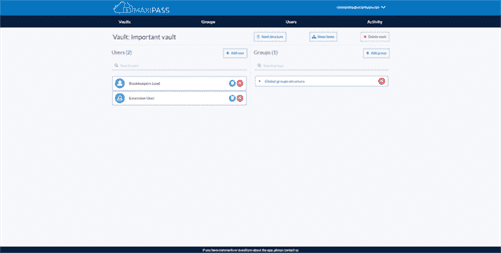Once you’ve generated a suitable number of applications, it is time to review the resumes and shortlist the best candidates. If you have received a high volume of resumes, consider using automation software to scan for keywords and phrases. Compared to outsourcing, it can become quite costly to allocate operational duties in-house.
To help you understand the phenomenon better, let us break down all these factors by using the same scale. Having your own team means being able to train them in a way that you consider most valuable to your organization. It also allows you to promote a business culture among your team members that aligns with your organizational goals, enabling them to deliver more value.
Advantages of In-House
Now, let’s take a closer look at the downsides of having an in-house software development team. The only way to make your business thrive is to access a pool of experts with evolving and current skill sets. With that, it is also important to understand that what skill set is actually needed to build the product while managing its completion and execution.
- Altigee helps startups and tech companies build remote engineering teams or extend their existing teams with senior tech talent.
- With your own team, you can make informed choices that directly affect product development while protecting data security.
- Product development will drive bug fixes, new releases, and more feature requests.
- Both outsourcing and in-house software development have strengths and weaknesses.
Doing so allows access to a larger pool of talent without placing too many risks on the vendor. Besides, you’re able to cut down on fixed outsourcing software development cost and has more flexibility in delegating resources. Admittedly, choosing between in-house and outsourced development is challenging.
The Disadvantages of Outsourcing Software Development
The way in-house development works is fairly simple, though the success or failure of its implementation really depends on you. Internal teams are highly dependent on each individual member, making them subject to (potentially unexpected) changes in capacity. By establishing open lines of communication, establishing objectives and deadlines, encouraging teamwork, and soliciting regular input from teams, these difficulties can be lessened. Even if a specialist is not directly involved in the project, they can still offer their knowledge and advice to others in the company. To attract employees, a job offer must be posted and candidates need to respond, be selected, and be interviewed. On top of that, new employees need to receive training, attend meetings, define goals, etc.
On the outsource market, IT services take up 72% of all global outsourcing contract values (ISG). If you’re hiring staff onsite, chances are they’re from the same country and therefore share the same language and culture as you. And it’s not just the time zone or language differences (although those can be significant factors). And because members of an in-house team are essentially your employees, it’s natural for them to embody that culture. If you opt for this model, you also don’t have to deal with administrative and HR issues, which allows you to focus on more pressing tasks. You also need to cover the onboarding, equipment, and consistent skills training to make them highly effective.
Expanding Skill Sets with IT-Dedicated Teams
They also have better access to their in-house team members and can closely work with them and monitor their progress. In-house managers are always involved more in all project details, and they can have a more transparent business vision, as they can directly connect to any in-house team member. Outsourcing might be a perfect solution, since it allows you to hire a team/specialist to tackle a very specific task within a certain time. This works well when you have a one-time project and the product or service won’t require 24/7 maintenance. Do you have the same amount of control over a dedicated team vs an in-house team? Your project manager can work directly with a dedicated team just as easily as they could with an in-house team.

However, in many other cases, hiring your own team might pose challenges that outweigh the gains for the company. According to studies, insourcing business operations directly correlates to an increase in social capital and knowledge sharing. It is because trust plays an important https://www.globalcloudteam.com/ role and knowledge sharing and colleagues are more likely to trust employees they already know compared to new hires. A good example of executing in-house would be if an organization were to propose a new accounting department and hire all the accounting staff from within.
services
When recruiting for an in-house team working in the office, your options are limited to local candidates. You can enjoy easy and effective face-to-face interactions since you’re working in the same office. You will also avoid technical difficulties that sometimes disrupt online communication. And because you and your team speak the same language, no instructions will be lost in translation. As we move on to summarize the discussion about outsourcing vs. in-house app development.

Let’s have a look at the comparison table that includes all the key aspects of each of these approaches. In brief, you face risk in hiring the best firm, with the right staff and with the right process. Thus, you must know what you are actually looking for including some of the common questions to ask to make sure you employ the right company. The final stage of recruitment is interviewing your preferred applicants and narrowing the pool down even further. It’s typical to have multiple interviews for software development positions, and you can even hold telephone or video interviews for the first round.
What are the key factors to consider when choosing between in-house development and outsourcing?
A designated tech firm certainly offers a lot more talent to first understand and then execute your business project. Their expert staff is always available for your project and whenever you need them. Same goes for scaling your projects down – as I already mentioned in point 1.
In that case, the work is performed by an external organization, for example, a specialized company. A specialized project requires members with a particular skill set. If that skillset is missing in the team, a new candidate must be sought. This situation can also occur when the project is changed or expanded. An extra employee brings many costs, both in terms of time and money, and involves new equipment, holidays, and insurance fees.
Remote Development Team Management: How to Make It Efficient
This article highlights the major distinctions between in-house and outsourcing models and contains insights from a CTO so that you can make an informed decision. Before we move to conclusions, let’s summarize the benefits and drawbacks of the two approaches based on specific criteria. Considering the overall project success, the risk entirely falls on you and your hired team, assuming you have hired the best team. If you don’t any experience you will have to take someone’s help otherwise you might deal with the huge loss of not recognizing the right talent.
